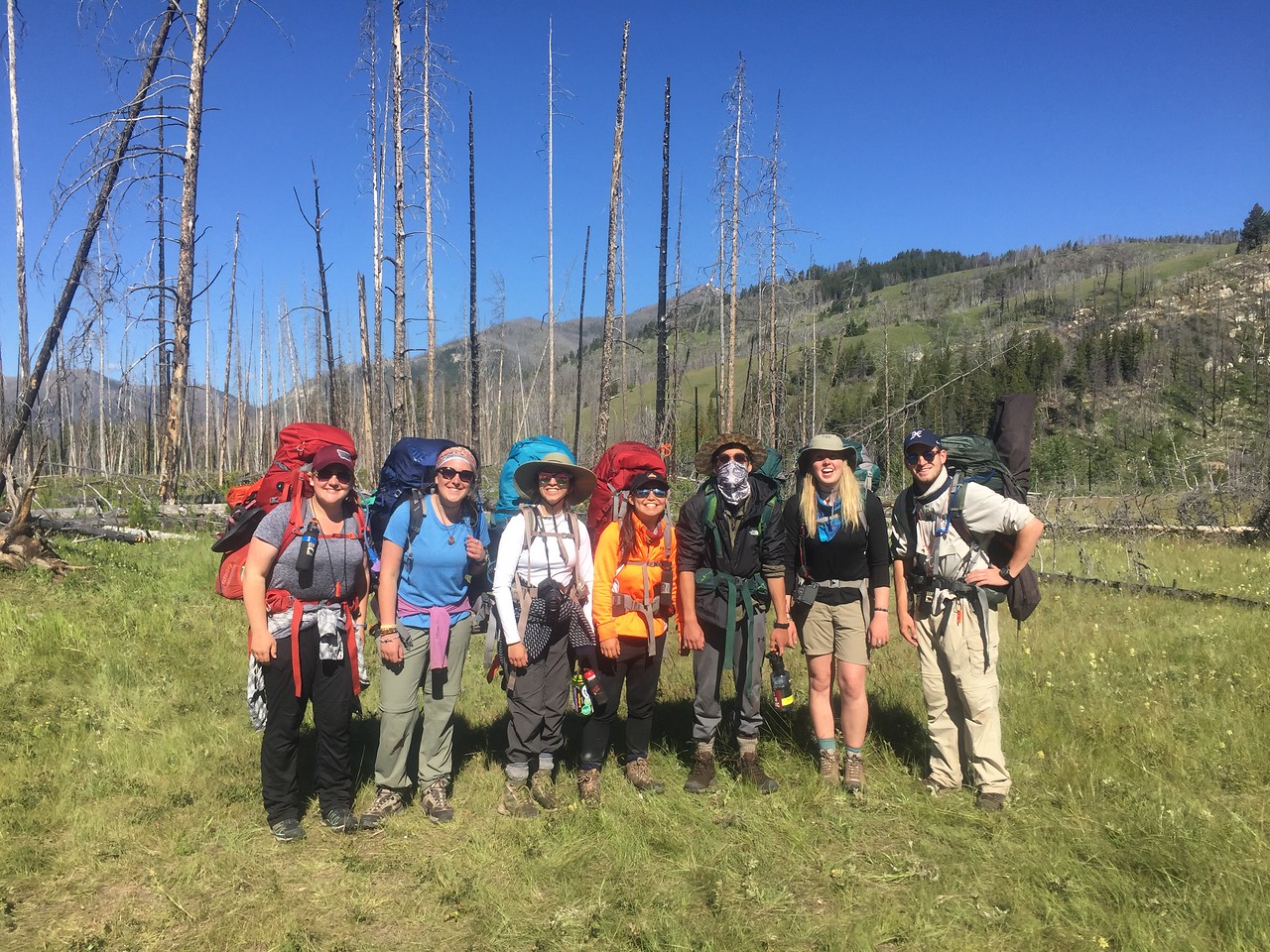 Let me paint you a picture: the sun is shining and the air smells of wild flowers. You’re excited for the start of a new adventure. There are eight other people and you’re onto your ninth self-pep talk of the day. Not to mention the backpack the size of a six year old that is grasping onto your shoulders and hips. Exhaustion has now started to take effect after the fifth mile of the day and your gaze has not left the rich, dark soil that makes up the hiking trail for the last half hour. Somehow you obtain the strength to lift your head and take in all of your surroundings and all that is ahead. As far as you can see along the trail is a forest with rich vegetation but all of the older trees are completely burnt and dead. It’s obvious that a wild fire has passed through this area within the last decade. Suddenly this picture perfect moment has turned into a post-disaster scene where organisms are doing their best to move on and replenish the land. But is it really such a disaster?
Let me paint you a picture: the sun is shining and the air smells of wild flowers. You’re excited for the start of a new adventure. There are eight other people and you’re onto your ninth self-pep talk of the day. Not to mention the backpack the size of a six year old that is grasping onto your shoulders and hips. Exhaustion has now started to take effect after the fifth mile of the day and your gaze has not left the rich, dark soil that makes up the hiking trail for the last half hour. Somehow you obtain the strength to lift your head and take in all of your surroundings and all that is ahead. As far as you can see along the trail is a forest with rich vegetation but all of the older trees are completely burnt and dead. It’s obvious that a wild fire has passed through this area within the last decade. Suddenly this picture perfect moment has turned into a post-disaster scene where organisms are doing their best to move on and replenish the land. But is it really such a disaster?
Throughout human history, wildfires have been given this negative connotation for destroying human homes, disrupting wildlife, and tarnishing landscapes. The Bob Marshall Wilderness is only one of thousands of forests that have been scarred by a relentless flame. Although it seems destructive and horrible for the ecosystem, there are actually quite a few benefits to having intermediate disturbances such as these. Wildfires do a ginormous help in returning nutrients to the soil. If a forest that has wildfires as part of its natural cycle, continues to grow without an intermediate disturbance such as this then the soil will eventually run dry of nutrients. This leads to unhealthy forests where organisms will not be able to get what they need. Not only that, different plant species are all competing for sunlight, water, and nutrients. If all of these species continue to grow and get taller, it will then out compete other species that either aren’t supposed to grow tall or will not be able to due to lack of necessities. Wildfires make it so that this is less likely to happen which in turn betters the ecosystem as a whole.
Forest fires can be thought of as catastrophes in our everyday lives. For this backpacking trip: blisters, falling over logs, and rolling ankles are just a few disasters that we have had to overcome. Although these catastrophes can be devastating in the moment, with time, it can become part of the natural cycle which lead to bigger and better things. Being on this Wild Rockies Field Institute course with a group of eight other fantastic individuals has helped me to realize that these catastrophes can turn into beautiful once in a lifetime moments on top of mountains that have a gorgeous view.